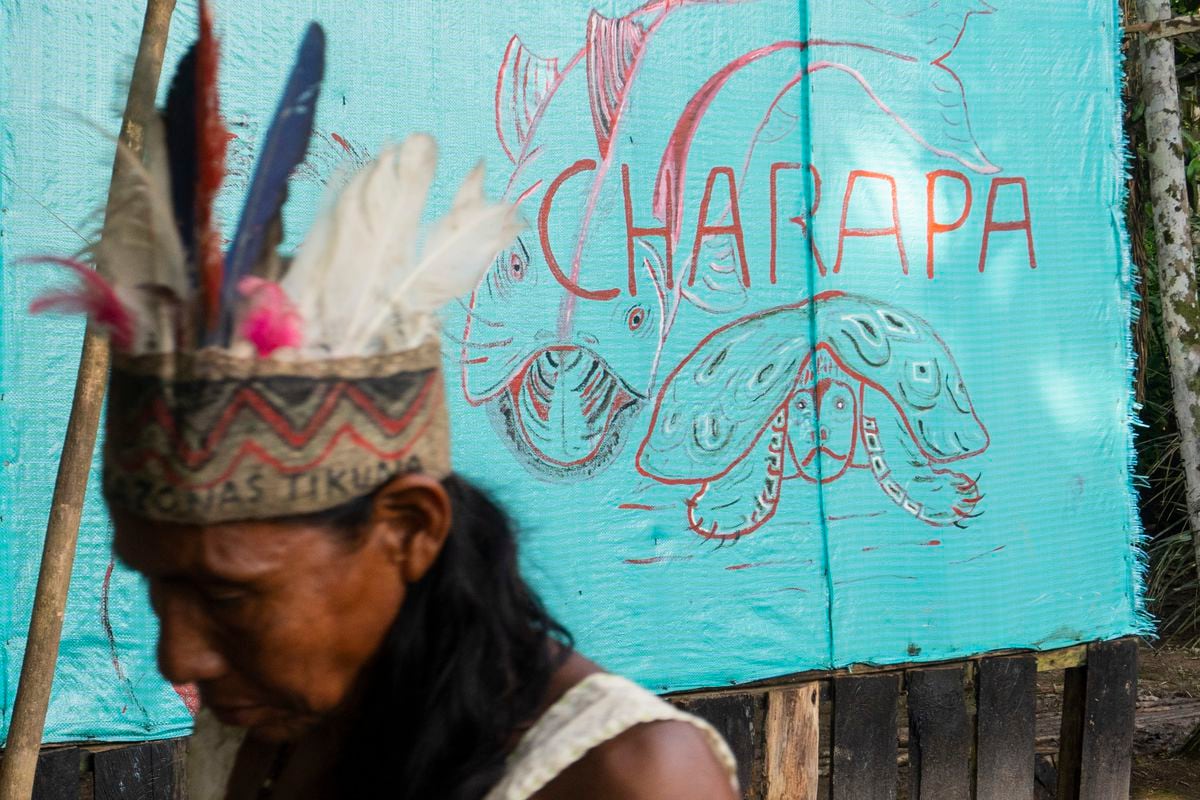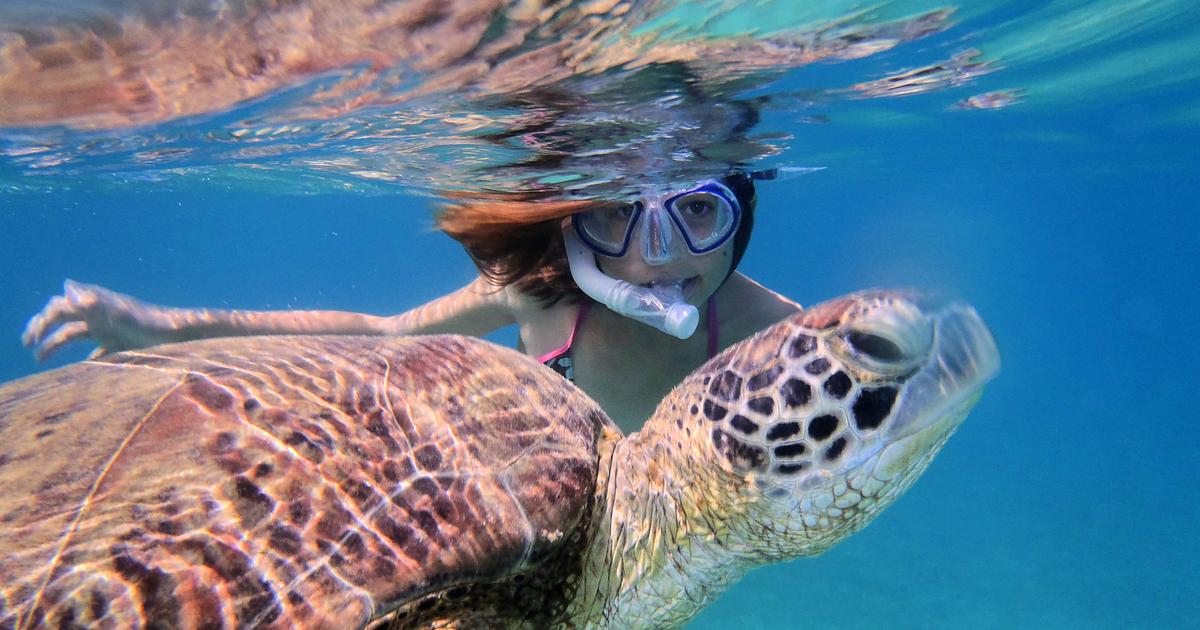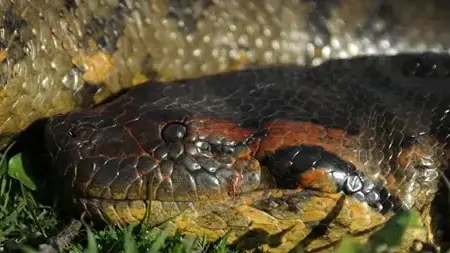EL PAÍS offers the América Futura section open for its daily and global informative contribution on sustainable development.
If you want to support our journalism, subscribe
here
.
The chroniclers of the 17th century admired themselves, before an Amazonian nature in its splendor: “There are turtles in such great abundance that when they come up to the sandy shores to bury their eggs, more than a thousand of them arrive in the same night.
The number of eggs they lay at one time is incredible."
After centu father to get turtles for family consumption.
"Thousands of specimens went up in one night, the beach was full of traces."
But in recent decades, the increase in the human population and its full incorporation into the market economy have taken their toll: in the Colombian stretch of the Amazon River, finding a turtle became a luck reserved for poachers, who sold mothers and eggs in the markets of Leticia, Tabatinga and Caballococha, on the triple border of the Amazon Trapezium.
"Commercialization", notes Don Rogelio.
“More than one took their ten or fifteen turtles to sell, dozens of eggs.
And the turtles are over.
Residents of the indigenous reservation of Santa Sofía carry the shell of a turtle.Carlos Suárez Álvarez
This is the story of how those who hunted yesterday take care today.
This is how Nabil Carihuasari, Don Rogelio's son and field coordinator of a successful community conservation program explains it: “With the help of our grandfather, with his knowledge, we said: 'We are going to stop this because the turtles are going to end.'
And today we are committed so that our children and our grandchildren can also get to know them”, as Carihuasari says.
alliance of knowledge
In 2008, the traditional doctor Rogelio Carihuasari had an idea: make turtle care a profession.
His house, in the indigenous reservation of Santa Sofía, was a regular destination for visitors attracted by the ayahuasca ceremonies that he celebrates, and he asked everyone how to get financial help to make his vision come true.
One day the biologist Fernando Arbeláez, general director of Fundación Biodiversa Colombia, appeared, and fate clicked.
"I got some resources and we began to take care of the beaches in 2008," recalls Arbeláez.
“In that year there were six guardians from Don Rogelio's family, and they protected a single beach.
Today there are 188 monitors from six indigenous communities who are taking care of six beaches, both on the Colombian and Peruvian sides of the river.”
The traditional doctor Rogelio Carihuasari, rests next to a tree in Santa Sofía.Carlos Suárez Álvarez
The results have been spectacular.
If in 2008 the six guardians protected 17 nests and released 112 baby turtles, today 854 nests have been protected and more than 22,000 little ones have been released.
The turtles belong to three species: the great charapa, which can reach a meter in length and 60 kilos, and which lays up to 150 eggs;
the medium-sized taricaya, half a meter long, which lays up to 50 eggs;
and the small cupiso, 30 centimeters long, which spawns up to 25 eggs.
All three, however, share a worrying characteristic: they belong to the "vulnerable" category on the International Union for Conservation of Nature's red list.
They are at risk of extinction.
The groups of monitors board their boats from the communities of Santa Sofía, Nuevo Jardín, San José or Progreso, in Colombia, and Barranco or Yahúma, in Peru, when evening falls and they reach the nearby beaches.
They set up a simple camp, take shelter inside the netting from the cloud of mosquitoes and eat something before the night is deep.
So they go around.
They use a red light, imperceptible to the turtles, scanning the ground for traces while watching that there are no fishermen stationed to capture the animals.
When they find the mother, the scientific knowledge provided by the Biodiversa Foundation comes into play.
They take biometric measurements of the mother (track width, carapace measurements) and put an identification tag on her before letting her go.
The nests are geo-referenced using GPS and the eggs are carefully removed for their “transplantation”.
Nabil Carihuasari, field coordinator of the program, explains the reason: “It is done because there are nests that are at risk.
Natural risk and risk of predators that are humans.
The natural risk is that there are mother turtles that spawn near the rainwater channel on the beaches, which can damage them.
Also, there are turtles that lay close to the shore, and they are very easy for humans to see.”
A camp in the indigenous reservation of Santa Sofía, set up to prevent the hunting of turtles.Carlos Suárez Álvarez
Nabil Carihuasari says it: the human being, that predator.
Much has changed since the indigenous peoples of the Amazon, before the arrival of the Europeans, exercised strict ecological control over their lush territory.
The invasion ruptured the system and, since the 16th century, the most varied products of Amazonian nature were exploited for the global market;
in exchange, indigenous peoples received manufactured items that, like iron tools, forever changed their society and economy.
The butter from turtle eggs, used as fuel for lamps of the time, was the object of one of the most intense campaigns of overexploitation, both in the Amazon and Orinoco basins.
Naturalists and explorers of the 19th century, such as Alexander von Humboldt or Henry Walter Bates, estimated that more than one hundred million eggs were used each year to produce oil for export.
raising awareness among fishermen
In the 21st century, it is no longer iron that indigenous people need, but money to pay for housing, food, clothing, school supplies, motors or cell phones.
The basic necessities previously provided by nature now require money.
That is why it is common for the monitors, on their rounds, to meet fishermen or poachers, who hope to get a few pesos from the sale of the turtles and their eggs.
“We tell them about the process we are carrying out, which is not only for us but for everyone”, says Nabil Carihuasari.
“Then we ask them if they can stop fishing in that sector so that the turtles have confidence to come up.
There are fishermen who understand, but there are others who are upset.
Sometimes they insult us, they pull machetes at us, they pull shotguns at us.
These are scary things."
A group of volunteers inspect the catch obtained with a net in Santa Sofía to ensure that there are no turtles among the fish.Carlos Suárez Álvarez
The desperation of the fishermen is understandable: in the last fifteen years, the size, variety and abundance of fish has drastically decreased.
But the monitors avoid confrontation and continue their information campaign armed with patience and a sentimental mantra to which no one is immune in the region: “That our children and grandchildren learn about these species, that they do not learn about them only through photographs or drawings.
That would be very sad."
Working with children is essential.
"We do environmental education activities," explains Nabil.
“In schools, there are future adults.
So the idea is to give the message very early so that they know what is happening with our animals, and that in the future they can take advantage of them properly”.
In addition to talks and workshops in schools, an activity stands out for its symbolic force.
When the eggs hatch, the children are taken to the beach so that, in a festive atmosphere, they themselves release the turtles into the Amazon River.
Before doing so, each child has to sponsor a little turtle and give it a name.
In this way, explains Nabil Carihuasari, a bond is created such that when a fisherman catches a turtle, the children feel motivated to defend it.
The director of Fundación Biodiversa, Fernando Arbeláez, stresses the importance of this educational dimension: “They will be tomorrow's turtle guardians.
In fact, there are already some of the children who participated in the first environmental education activities twelve years ago who are now part of conservation groups”.
This educational component of the project was decisive for the A Ciencia Cierta program, of the Ministry of Science, Technology and Innovation of Colombia, to reward this initiative in 2020 with 20,000 dollars, an emotional and financial boost for the consolidation of the project.
A group of children from the Santa Sofía indigenous reservation color pictures of turtles in a community room.Carlos Suárez Álvarez
economical alternative
Back in 2008, Don Rogelio and family began their conservation work tooth and nail.
They dreamed that one day the activity could generate income, but both the association they created, Curuinsi Huasi, and its scientific counterpart, Fundación Biodiversa Colombia, were clear that the motivation of the monitors could not be exclusively economic.
In fact, the first years, the money was barely enough for expenses.
Later, the monitors began to charge symbolic amounts, “for the soda”, they joked.
In the recently concluded campaign, when the project has found financial support in various institutions, the amount received by each "old" participant has been 25,000 pesos per night (just over 5 dollars).
The "new" earn half during their first two campaigns,
“What we are promoting with this project”, emphasizes Fernando Arbeláez, “is that there be an economic alternative based on conservation, so that they do not have to sell their resources.
This is a job and they have all the credentials to do it.
In addition, it is for the good of all, because turtles are a heritage of humanity”.
In recent years, the strategy to obtain financing has focused on the creation of a community plant for the processing of açaí, an Amazonian fruit of great nutritional value and international demand.
The plant will buy açaí from the participants in the program at a good price, and by processing and exporting the pulp, profits will be generated that will redound to the project.
"It would be the first self-sustaining conservation project in the Amazon," dreams Arbeláez.
Two children from Santa Sofía. Carlos Suárez Álvarez
Bye, baby turtles
The closing of the fifteenth campaign is celebrated in style with the Dance of the Taricaya.
Two hundred people from the Yagua, Tikuna and Cocama peoples, both from Colombia and Peru, enjoy their traditional dances and songs.
A group from the Tikuna People performs a dance that usually takes place during the pelazón, the girls' ritual of passage, to the rhythm of a drum made from the shell of the taricaya.
“The taricaya for us is a symbolic animal.
We use her shell to produce a protective sound, so that this young lady is stronger and braver”, explains Nabil Carihuasari.
It does not matter that the dance is performed in a different context from the original, the dancers enjoy the singing and the movement, the spectators join the frenzy, and the many children are amazed and discover traditions that, like the turtles, are also in danger. of disappearance.
At the end of the afternoon, as a climax, the assistants go to the river to release the last little turtles of the season.
It is the favorite time of children.
Only a few lucky ones have the responsibility of taking a little one of hers, godparenting her, giving her a name and, with exquisite care, letting her start her life in freedom.
“Ciao, little turtle”, they say.
"They left," you hear.
“What will become of them?” they wonder.
Newly hatched turtles about to be released into the Amazon River.Carlos Suárez Álvarez














